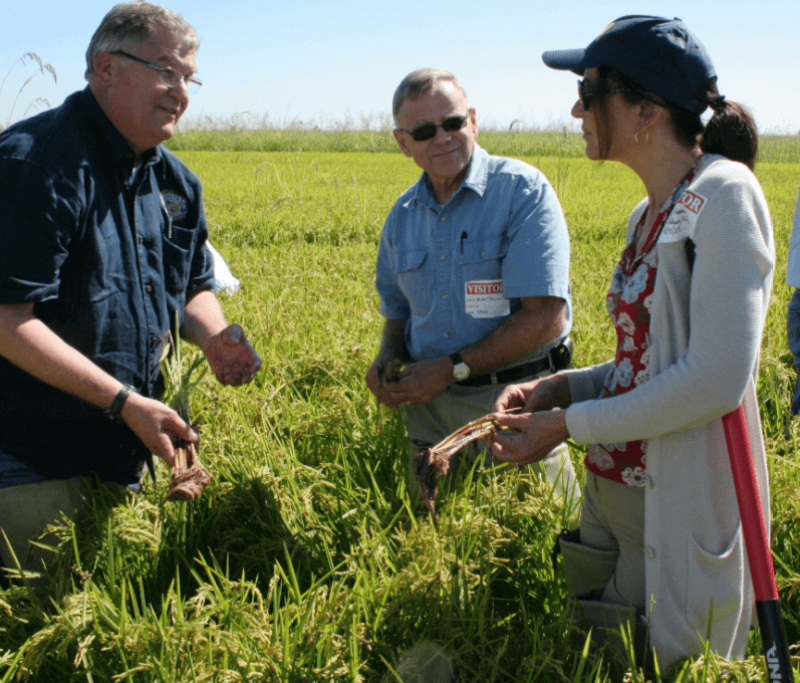Rice breeders today develop improved varieties from genetic breeding stock that has been advanced through thousands of generations and over many decades with conventional crossbreeding techniques, said Vibha Srivastava, professor of crop, soil and environmental sciences for the Division of Agriculture [at the University of Arkansas] .
…
A lot of useful genetic traits are available in wild relatives of rice, Srivastava said. But to move those traits into available breeding stock by conventional means would require hundreds or thousands of crossbred generations that would take decades to accomplish.
Gene editing makes that process faster, easier and more precise by providing a means to recreate such traits in existing breeding stock, Srivastava said.
She is adapting a technology called “CRISPR,” scientific shorthand for “clustered regularly interspaced short palindromic repeats.” These are segments of DNA that contain short, repetitive base sequences.
The Division of Agriculture recognized the importance of gene editing technology, Srivastava said, and invested in a research program to develop it for use in Arkansas rice breeding. The program teams Srivastava with two other division scientists—plant pathologist Ken Korth and weed scientist Nilda Burgos.
She emphasizes that gene editing is not the same as genetic modification, in which genetic code from one organism is inserted into another organism.
The GLP aggregated and excerpted this article to reflect the diversity of news, opinion and analysis. Read full, original post: Researchers add gene editing to rice research toolbox































